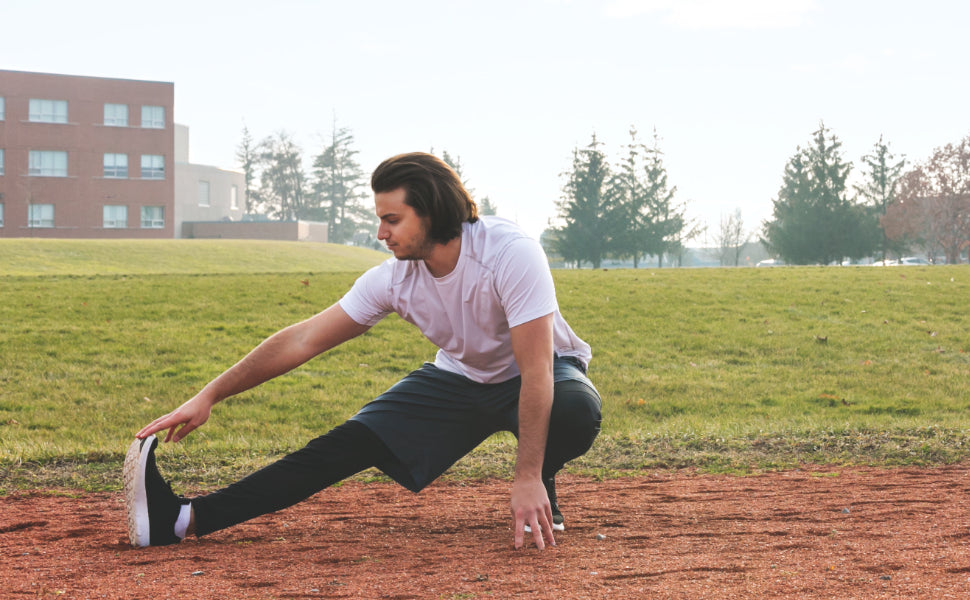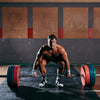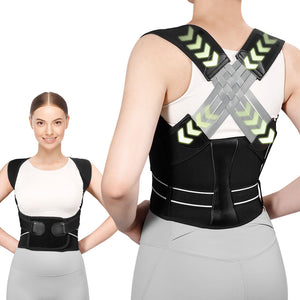How to Increase Leg Flexibility?

This article offers tips and exercises to help people improve their leg flexibility. Flexibility is necessary for many physical activities, such as sports, dancing, and daily movements. By incorporating the suggested techniques into your regular practice, you can gradually increase your leg flexibility and enjoy its advantages. Now let's examine some doable strategies for increasing leg flexibility.
Leg Stretching Exercises
Stretches for the legs can ease muscular tension, increase blood flow, and enhance flexibility. The stretches listed below are ones you can try:
- Quadriceps stretch: Stand up straight and place one hand beneath your ankle or foot. As you slowly bring the heel toward your buttocks, keep your knees close together. Hold each leg and stretch for 20 to 30 seconds.
- Hamstring stretch: Lie down on the ground with one leg straight in front of you and the other knee bent, the sole of your foot touching the inner thigh of the extended leg. Straighten your back and lean forward from your hips until you feel a slight stretch in the back of the extended leg. After 20 to 30 seconds of holding, switch up your legs.
- Calf stretch: Face a wall and place your hands at shoulder height on the wall. With one foot straight and the heel on the ground, take a step back. Bend your front knee and keep your back leg straight as you lean forward. The rear leg's calf muscle ought to feel stretched. After 20 to 30 seconds of holding, switch up your legs.
- Inner thigh stretch: Lie down on your stomach and bring the balls of your feet together, allowing your knees to fall outwards. Press your knees gently toward the floor until your inner thighs begin to stretch. Hold for 20 to 30 seconds.
- Hip flexor stretch: Lower yourself to a single knee while placing your opposing foot flat on the floor in front of you. Gently push your hips forward with a straight back until you feel a stretch in the front of your hip of the kneeling leg. After 20 to 30 seconds of holding, switch sides.
When performing these stretches, never strain yourself excessively.
fivalifitness.com
Yoga and Pilates for Leg Flexibility
It's easy to increase leg flexibility with pilates and yoga. To help you stretch and strengthen the muscles in your legs, they offer a range of poses and workouts. Here are a couple of examples:
- Downward Facing Dog (Adho Mukha Svanasana): This yoga pose stretches the calves, hamstrings, and Achilles tendons while strengthening the quadriceps.
- Standing Forward Fold (Uttanasana): This pose stretches and lengthens the calves and hamstrings. Bending your knees can help you release any tension you may be experiencing in these areas.
- Warrior II (Virabhadrasana II): This yoga pose develops leg flexibility by working the hip flexors, inner thighs, and outer hips.
- Pigeon pose (Eka Pada Rajakapotasana): This hip-opening pose can help relieve tightness in the hips and glutes, particularly the outer thigh muscles, while also improving leg flexibility.
The flexibility and strength of the leg muscles can be increased by performing Pilates exercises that specifically target and activate the leg muscles, such as side kicks, leg circles, and leg lifts. Pilates also emphasizes the importance of core stability, which is necessary to maintain proper alignment during leg exercises.
Massage Guns
In recent years, the popularity of massage guns—also known as percussion massagers or percussive therapy devices—has increased dramatically due to their efficacy in promoting flexibility and lowering muscle tension.
Massagers have become more and more popular, especially with athletes and fitness enthusiasts who often experience tightness and stiffness in their muscles. These devices function by subjecting the muscles to strong percussions, which enhance blood flow, reduce lactic acid accumulation, and relax tight muscles. Higher degrees of motion, quicker recovery times, and improved athletic performance could all be advantageous to people.
One of the key advantages of a handheld muscle massager is its ease of use and comfort. Unlike traditional massages that require professional intervention, these portable devices allow people to self-administer focused messages whenever they want and in the comfort of their own homes. To customize their massage experience, users can choose from a range of heads or attachments on massage guns that target specific muscle areas.
Knee Protection Tips for Sports
Here are some sports-related knee protection advice:
- Wear knee pads: To give your knees additional support and cushioning when playing high-impact sports like basketball, volleyball, or skateboarding, think about donning knee pads.
- Become more muscular in your legs by doing strength-training exercises. This will strengthen the muscles surrounding your knees, which will help stabilize your body and lower your chance of injury when playing sports.
- Wear the appropriate footwear: To reduce the impact on your knees when playing sports, choose athletic shoes with plenty of support and cushioning.
- Warm-up and cool-down: Always warm up properly before participating in sports activities and cool down afterward to avoid muscle tightness and reduce the risk of knee injuries.
- Proper technique: Learn and practice proper techniques for your sport to reduce strain on your knees and the risk of overuse injuries.
- Pay attention to your body. When playing sports, pay attention to any pain or discomfort in your knees and take a break to prevent further strain or injury.
- Refrain from overtraining: Overtraining raises the possibility of knee injuries. Between strenuous games or training sessions, give yourself enough time to rest and recover.
fivalifitness.com
Reference
How to get Flexible Legs Fast - YouTube
*Disclaimer
The information provided in articles written by Fivali is intended for educational and reference purposes only. The content on this website (www.fivalifitness.com) is not intended to diagnose, treat, cure, or prevent any disease. We do not recommend self-diagnosis or self-treatment based on the information provided in our articles. Always consult a qualified healthcare professional if you have any concerns about your health or well-being.
If you are experiencing any symptoms or discomfort, we strongly encourage you to seek medical attention from a qualified healthcare professional. Only a licensed healthcare practitioner can provide an accurate diagnosis and appropriate treatment plan tailored to your individual needs.
-
Posted in
Brace, Healthy Lifestyle, sports













